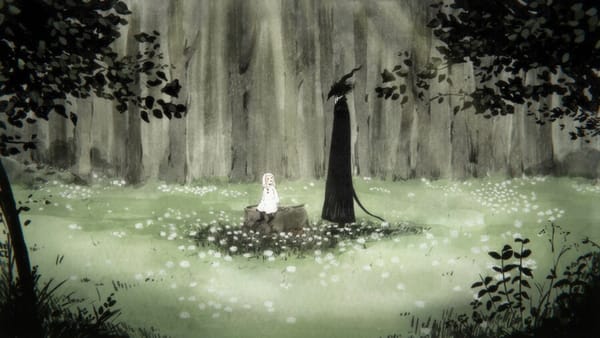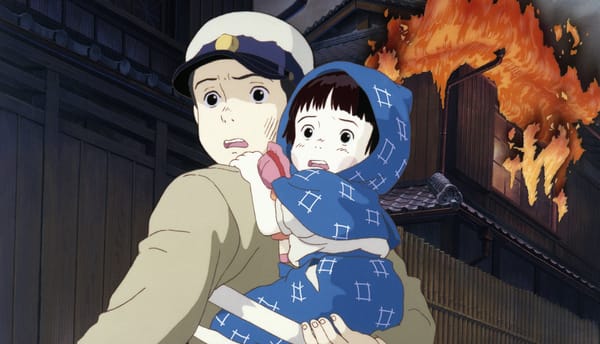A Review of Wisconsin Film Festival Trends in the Past Five Years. The Often Invisible Shift to “All Things Local”
by Freddy Moyano
I recently read on a social media post that renowned filmmaker, Marty Scorsese, was of the opinion that theaters should focus on screening films that are not necessarily blockbusters, that is, those that people with a special love for the art can sit down and enjoy, regardless of the budget.
I am not shocking many of our readers if I affirm that insightful dialogues and well-crafted plots are slowly succumbing to AI and computer generated content, which is often tied to astronomical and seemingly out of control budgets. Is the essence of filmmaking vanishing?
Striking efforts such as those pursued by SAG-AFTRA have been trailing now for many weeks/months, but they represent one of those last resorts to bring back highly qualified screen and stunt actors who are in many ways affected by digitally cloned versions of actors who are no longer in their youth, in lieu of recasting or rewriting parts that could be most effective without any kind of alterations that remove, in my view, the “innocence” of filmmaking.
My review today is not so much of what is trending between SAG-AFTRA and the folks at the Motion Picture Association. Having run a film festival in the Green Bay area since 2019, not to mention countless times on the other side of the table as an actor or filmmaker, pandemic or not, I have seen a decline in the quality of film festivals nationwide, and particularly in the Midwest, of no less worrying proportions.
In my observations over the last five years of Wisconsin film festivals, I have always been of the opinion that local art attracting in many cases many local crowds should be a priority. Much to my surprise, festivals who focused on Wisconsin films are more and more scarce. The pandemic forced many festivals to shut down, true, but those festivals that remain in business today have been disregarding Wisconsin/local film work in a progressive trend. How visible is this local “innocence” preserved in Wisconsin?
Months ago while interviewing an anonymous filmmaker from Milwaukee over a Milwaukee themed feature theme he had poured his heart and soul to produce and distribute, I asked him: “So how has your film been received in your Milwaukee home town [where he grew up too]?” He replied “believe it or not, no festival in the Milwaukee area has yet selected my work.” This film was widely celebrated at prestigious film festivals in Seattle and many other areas including Green Bay. While I externally showed shock and honest commiseration during the interview, on the inside I sadly was not all the way shocked, knowing those areas well and their priorities on films over $100,000 in budget.
In recent conversations with one of the organizers of a once more popular NE Wisconsin based film festival, whom I will treat as anonymous, I agreed with him in quite a few aspects of the above trends. “We have screened international films only to realize crowds are not attracted to those. We are definitely going more local” he said.
I am not saying that out of state or out of the country filmmaking is not worth considering. We do in our festival as well. Yet keeping a mixed bag leaning on local values and artistry helps both the festival and the loyal base of submitting filmmakers grow.
During that same conversation I had with the fellow film festival organizer, I brought up something that was criticized by a small minority. “When I go to see my daughter’s Christmas school recital, I see at least 130+ attendees per session when you count parents, grandparents, etc.” I said to him. I went on to say that for the first couple of years of running our own film festival in the Green Bay area, audience attendance, in spite of our local-enhancement efforts, was on the decay side of things.
As I drove back from that Christmas 3rd grade recital in 2021, something came alive on the inside. “Why not tapping on the community with caring filmmaking work and eventually premiere that work during our film festival, to celebrate the work of local and community-based actors?” I wondered. Such as is what we did with Room 108, a feature film we produced and fully filmed in NE Wisconsin. The results? An astonishing overflow of waiting lines outside the Tarlton Theatre—downtown Green Bay—back on August 27 during the film’s Green Bay premiere.
But how do those other film festivals in America’s Dairyland get to survive? Many rely on heavy marketing returns, combined with music festivals taking place around the same time their galas are celebrated. Others have great sponsors behind. Or they partner with a trophy company getting a percentage of the trophy sales on trophies ordered by submitters. They “sell” awards, in other words while saving on screening costs by organizing online screening events. I heard it say “if it does not happen on the big screen, it did not happen” and I could not agree more.
I have seen a worrying trend of Cannes or Academy Award “wannabe festivals”, particularly with small film festivals in the Chicago area. Sadly as it may sound, that would be another market you most likely will not have your Midwest-made work celebrated at, unless it has a reportedly minimum of $100,000+ in the budget. Often times these “wannabe fests” top out and cease growing. They are run by 2 or 3 people at best, eventually dissolving. And guess what? Not the smallest attempt to embrace what is local.
Local should be cherished and celebrated. The amount of hours that indie filmmakers put in many of the films they submit is highly evident in most cases. Culture and history are often tied to those submissions. Films are vessels to express many messages as well. There is no small effort going into it. It should be visible.
Officially selecting a film should not necessarily need to mean it must screen. Many festival organizers feel compelled to screen what they select because they have bigger film festivals as a reference doing that. Those bigger film festivals have a considerably bigger financial muscle. Why imitating them?
Wisconsin/Midwest film festivals need to focus on seeing the positive versus the negative on submissions coming through. To preserve local filmmaking growth, in person networking should be encouraged in festival galas. Great feedback can come from those encounters versus a “Not Selected” online change of status in a submission. You are remembered by what you do for people and not by selecting a film that Cannes or the Academy previously awarded, or by bringing a specific celebrity to a film festival unless their testimony help filmmakers and general public in attendance grow.
I remain hopeful that the trends towards more and better embracing of all things local will change for good in 2024. Perhaps Marty Scorsese will see his wish (and mine) come true—particularly in smaller states like Wisconsin, still seeking their own identity in the indie film fest world.
Freddy Moyano is an award-winning filmmaker, writer, actor and producer. Also host of Green Bay based MLC Awards. Director of Room 108 and Union House Hotel among other productions. Film/theatre industry and wildlife expert. Teaches secrets of screen-acting in the Green Bay area. WNA First Award (Local Column Division C) recipient in 2023 for his “Rehabilitation Animal of the Month” written series.





